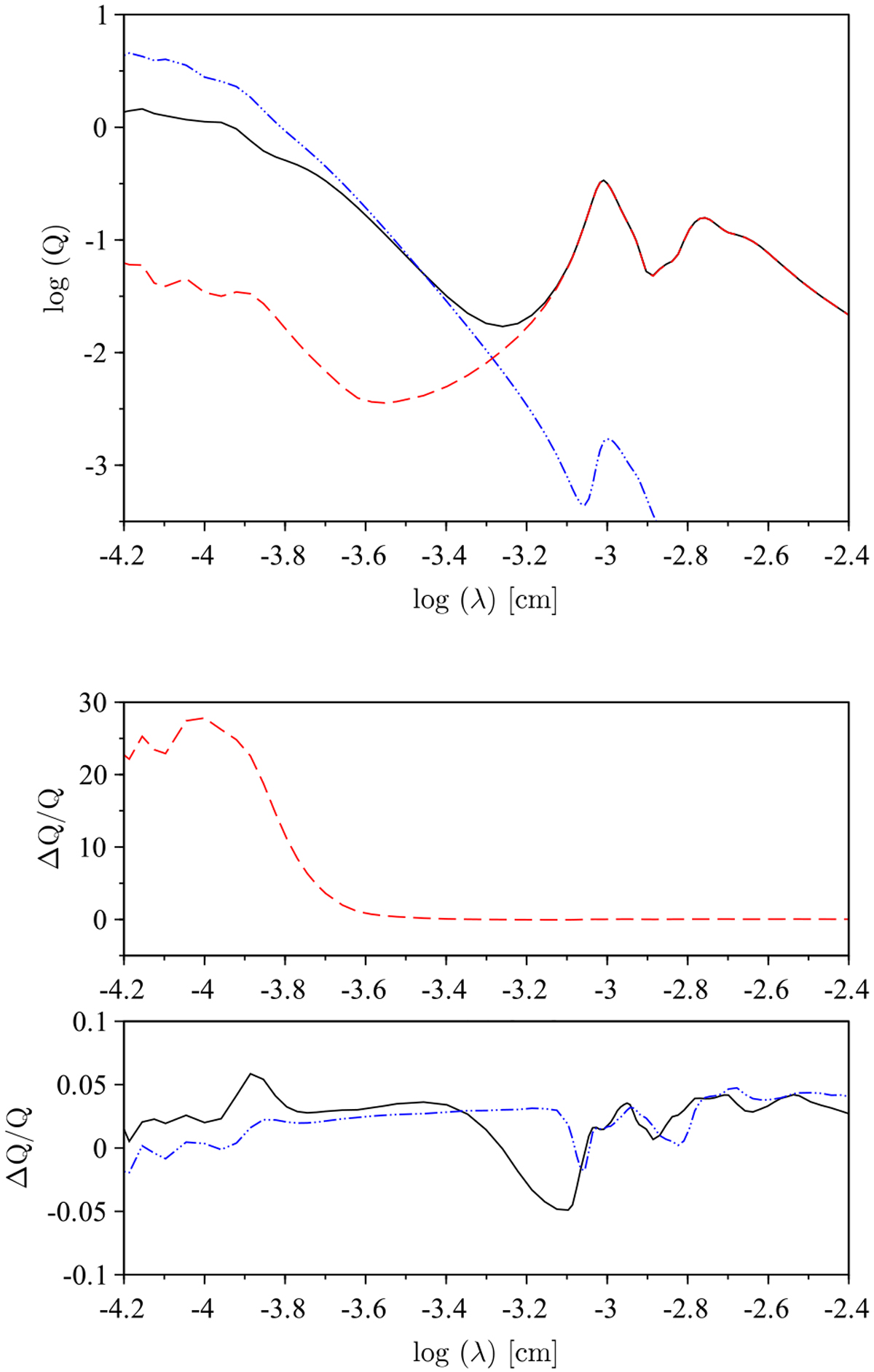Fig. 3

Download original image
Optical properties of a silicate grain with a total radius of 0.35 μm, consisting of an Mg2SiO4 core and an MgFeSiO4 mantle corresponding to 2% of the grain radius. Top panel: absorption efficiency (red dashed line), scattering efficiency (blue dash-triple-dotted line), and the resulting efficiency factor for radiative pressure (black line). Middle panel: relative difference of the absorption efficiency for the composite grain plotted in the top panel compared to a grain consisting entirely of Mg2SiO4. Bottom panel: same as the middle panel, but for the scattering efficiency (blue dash-triple-dotted line) and the efficiency factor for radiative pressure (black line). We note the different scales. The absorption efficiency of the Fe-enriched grain is almost 30 times higher around 1 μm (near the stellar flux maximum) than that of the Fe-free grain, leading to significantly stronger radiative heating. The radiative pressure efficiency factor, dominated by the almost unchanged scattering efficiency (weighted with the scattering angle; see Paper I), on the other hand, is only slightly higher for the Fe-bearing composite grain in this spectral region, explaining the moderate effect on the wind velocity.
Current usage metrics show cumulative count of Article Views (full-text article views including HTML views, PDF and ePub downloads, according to the available data) and Abstracts Views on Vision4Press platform.
Data correspond to usage on the plateform after 2015. The current usage metrics is available 48-96 hours after online publication and is updated daily on week days.
Initial download of the metrics may take a while.


